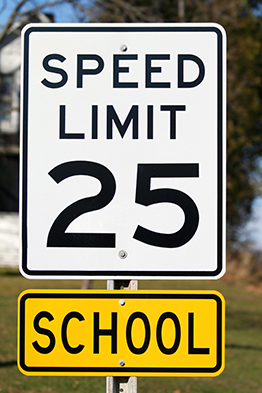
A new guide from the LRRB examines the history of Minnesota speed limits, a 2019 statutory change, and the consequence of the change to communities. It examines the effectiveness of speed limit changes and outlines a process for agencies to follow when deciding to make a change—and offers alternative strategies that work better for improving pedestrian and bicycle safety.
The issue of reducing speed limits to increase public safety is an emotional, political, and controversial topic that has been debated by safety advocates, engineers, politicians, transportation officials, and the public for many years. The 2019 statutory change (Minnesota Statute Section 169.14, subd. 2) put a spotlight on the topic, necessitating a deeper look into how speed limits are established, whether lowering speed limits effectively reduces vehicle traveling speeds, and how speed limits affect pedestrian and bicycle traffic.
The change gave cities the authority to establish speed limits for streets under their jurisdiction without having MnDOT conduct a speed study and without approval by the commissioner of transportation, provided that:
- Speed limits are implemented in a consistent and understandable manner.
- The city erects appropriate signs to display the speed limit.
- The city develops procedures to set speed limits based on the city’s safety, engineering, and traffic analysis considering national urban speed limit guidance and studies, local traffic crashes, and methods to effectively communicate the change to the public.
The revised statute does not require any action by a community. The change simply gives communities the opportunity to change speed limits on roads under their jurisdiction.
According to the report, however, there is no evidence to suggest lowering a speed limit will result in lower travel speeds. Based on all available data, effectively lowering vehicle speeds requires a combination of physical, operational, and regulatory measures to be successful.
The authors recommend that local agencies instead implement proven alternative strategies and modify the roadway environment to reduce travel speeds. Proven safety strategies to address pedestrian and bicycle safety include median crossings, crosswalk lighting, and road diets.
In addition, the authors advise implementing public outreach and a robust public involvement campaign before reducing speed limits citywide. This step is crucial to separate fact from perception and determine if residents and elected officials understand the likelihood of reducing travel speeds, they say.
Learn more:
- Guidelines for Determining Speed Limits on Municipal Roadways (LRRB/MnDOT, 2023)